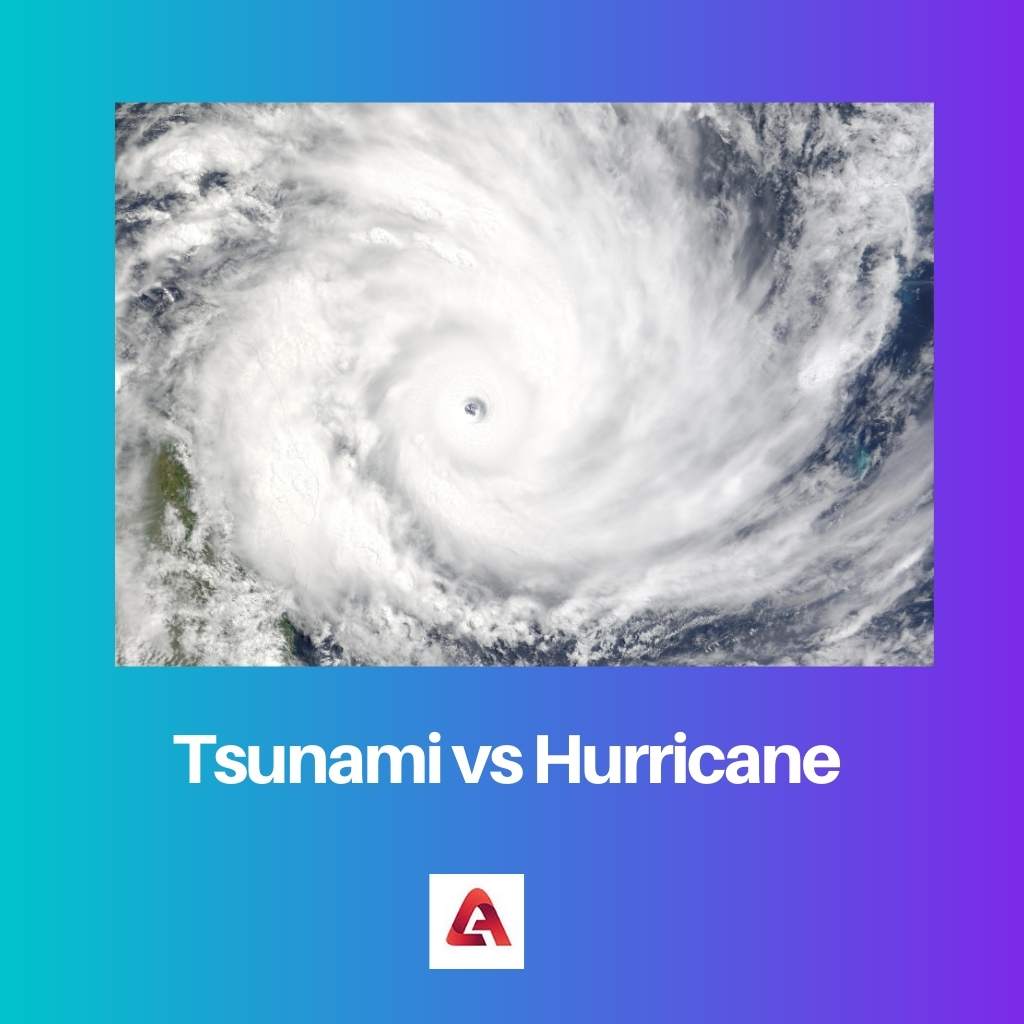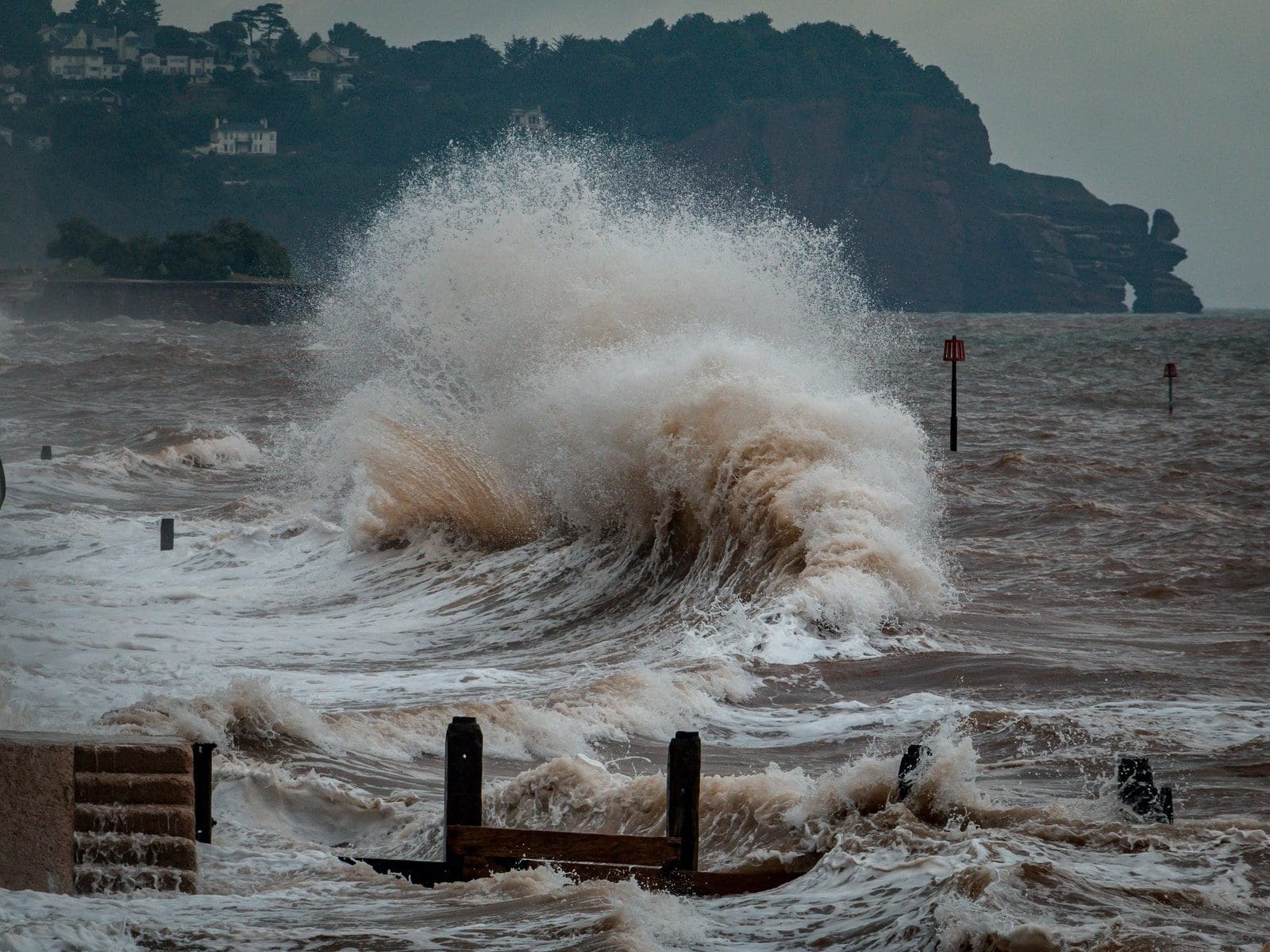Both tsunamis and hurricanes are natural calamities that can cause a disaster in the world within a few minutes. Although, both the causes have totally different features and ways of spreading.
A tsunami comes in a series of waves that are caused by the massive level of displacement in the water bodies, while a hurricane, on the other hand, is a storm with a very powerful effect.
Talking of the origin of both disasters, well, both of them are formed with totally different forces. Hurricanes are formed during warm months over warm ocean bodies. In contrast, tsunamis are formed by different underwater eruptions like- volcanic explosions, landslides, etc.
Key Takeaways
- A tsunami is a series of ocean waves triggered by an earthquake, volcanic eruption, or other underwater disturbance. At the same time, a hurricane is a large storm system that originates in the tropics and brings heavy rainfall, strong winds, and storm surges.
- Tsunamis can travel across entire ocean basins and cause widespread destruction along coastlines, while hurricanes affect smaller areas and can cause damage to structures, trees, and power lines.
- Tsunamis are caused by natural disasters that occur underwater, while hurricanes are fueled by warm ocean waters and can form over several days or weeks.
Tsunami vs Hurricane
A tsunami is a series of powerful water waves that rise from the water bodies. It occurs due to the disturbance in the water bodies caused by various factors, including earthquakes, volcanic eruptions, etc. Hurricane is a storm that brings strong winds and heavy rainfall and occurs in warm months.

Tsunamis are formed due to the explosions under the water that causes vertical rock movements and forms huge waves of water together, making way for a tsunami.
A tsunami can be caused by any underwater activity like- volcanic explosions, landslides under the water, etc. Basically, any disturbance, be it above the water or be it below the water, can cause a tsunami.
Hurricanes are powerful storms formed during warm months over warm water bodies. Hurricanes have a diameter of about 400-500 miles.
The center of the hurricane is called the eye of the hurricane, which can be about 20 miles. At the eye part of the hurricane, it is quite calm and smooth in the winds and has clear skies.
Comparison Table
| Parameters of Comparison | Tsunami | Hurricane |
|---|---|---|
| Cause | Caused by any underwater activity like a volcanic explosion. | Caused on warm water bodies that can give rise to huge winds. |
| Occurrence | Tsunami occurs in the area of or near the Pacific Ocean. Chances of occurrence in the Pacific Ocean are about 80 percent. | There is no specific area or region for hurricanes as they can take place anywhere. They are even known with different names in the different regions. |
| Origin of the word | The word tsunami has a Japanese origin. Where “Tsu” means the Harbour and “Nami” means waves. | The word hurricane was originated in Australia in the 19th century. |
| Presence | Tsunamis are strong tidal waves in the oceans and water bodies. | Hurricanes are huge and disruptive winds in the atmosphere. |
| What is it | A tsunami is a set of large and huge waves that are formed due to explosions under the water, causing some vertical movements of the rocks. | Hurricane is a system of very large and disruptive storms that are formed in the warm months of the year over the warm oceanic bodies |
What is Tsunami?
Tsunamis are formed due to the explosions under the water that causes vertical rock movements and forms huge waves of water together, making way for a tsunami.
A tsunami can be caused by any underwater activity like- volcanic explosions, landslides under the water, etc. Basically, any disturbance, be it above the water or be it below the water, can cause a tsunami.
According to some research, about 80 percent of the time, tsunamis occur in or around the area of the Pacific Ocean. The word tsunami has a Japanese origin. Where “Tsu” means the Harbour and “Nami” means waves.
The waves of tsunamis have small heights but are very long in wavelength that can be offshore too. The wavelength of a tsunami can sometimes be even more than or equal to hundreds of kilometers.
And this is why the waves of a tsunami can be unnoticed in the sea and cause great damage afterward.

What is Hurricane?
Hurricanes are powerful storms formed during warm months over warm water bodies. Hurricanes have a diameter of about 400-500 miles.
The center of the hurricane is called the eye of the hurricane, which can be about 20 miles. At the eye part of the hurricane, it is quite calm and smooth in the winds and has clear skies.
There is no specific place or area for the occurrence of hurricanes. They can happen anywhere. Different names in different regions also know them.
They are called storms in the North Atlantic and Caribbean regions, typhoons in the western part of the Pacific Ocean, and cyclones in the region over the Indian Ocean.

Main Differences Between Tsunami and Hurricane
- The main difference between a tsunami and a hurricane is that a hurricane is a system of disruptive storms that are formed in the warm months of the year over the warm oceanic bodies, while a tsunami, on the other hand, is a set of large and huge waves that are formed due to explosions under the water.
- Tsunamis occur in the area of or near the Pacific Ocean, while hurricanes can happen anywhere.
- The word tsunami originated from a Japanese word, while the word hurricane originated from Australia.
- A tsunami is a set of tidal waves in the water bodies, while hurricanes are the storm of wind in the atmosphere.
- Tsunamis cause eruptions in the water bodies and sometimes in the area around them, but hurricanes destroy the land as they occur in the atmosphere.

- https://books.google.com/books?hl=en&lr=&id=iGYj3eT384MC&oi=fnd&pg=PR7&dq=what+is+tsunami&ots=cEbO4K7Tf3&sig=v4azVyYCn8FOo1ciw3lnW3Mpg64
- https://books.google.com/books?hl=en&lr=&id=JyxRAAAAMAAJ&oi=fnd&pg=PA1&dq=what+is+hurricane&ots=uIugLe4PL_&sig=6QEypnIyJYP8vh6T2a0VbLpnIX0

I feel like the comparison of tsunamis and hurricanes was well-explained and very informative.
I think they could’ve included more details about the impact of tsunamis and hurricanes, but overall a good article.
The comparison table really helps in understanding the disparities between tsunamis and hurricanes, it’s a well-structured article.
Agreed, the side-by-side comparison makes for a very effective read.
I think it’s a great article, very well researched and detailed.
The article did a great job of highlighting the key differences between tsunamis and hurricanes, making it easy to comprehend.
I found it to be a valuable resource, especially with the nuanced details presented.
I found the explanations about how tsunamis and hurricanes are formed very engaging and easy to comprehend.
I appreciated the depth in the analysis of the two natural disasters; it’s very useful.
Absolutely, the detailed information provided is enriching.
The way the article delineates the differences between tsunamis and hurricanes is commendable, particularly with the specific examples provided.
I agree, it’s nice to have a comprehensive breakdown of the two calamities in one place.
The different aspects of tsunamis and hurricanes were portrayed with great clarity and precision in this article.
It’s refreshing to see a detailed analysis of these natural disasters in such a clear and accessible manner.
I totally agree, this article is an excellent resource for understanding these natural events.
This article gives an insightful comparison between tsunamis and hurricanes, highlighting their differences in causes and effects.
I agree, it is an interesting read.
The origin information was very helpful.
The article was very well written and informative in elucidating the differences between tsunamis and hurricanes.
This article really nailed the comparison, it offers a lot of valuable knowledge.
It’s nice to see a scientific piece that is comprehensive and intelligible.
It was a thorough explanation of the two natural calamities and their causes. Very well done!
The comparison table is particularly helpful and makes it easier to understand the differences.
I agree, the scientific comparisons between tsunamis and hurricanes were clear and engaging.
The factual information and breakdown provided about tsunamis and hurricanes in this article is very impressive.
I appreciated the inclusion of both scientific and geographical information – it’s a very comprehensive article.
Absolutely, the author’s analysis stands out for its depth and clarity.